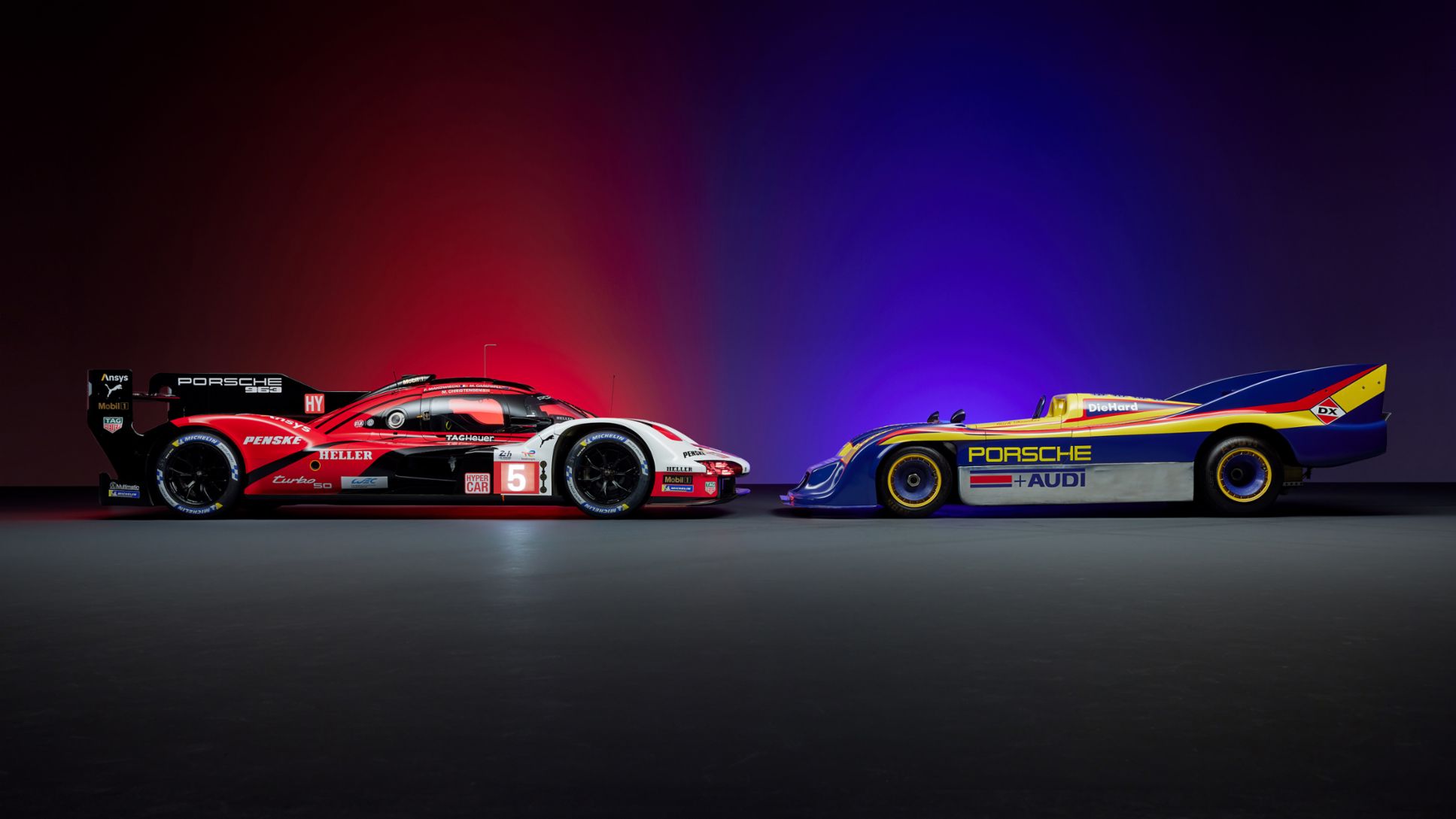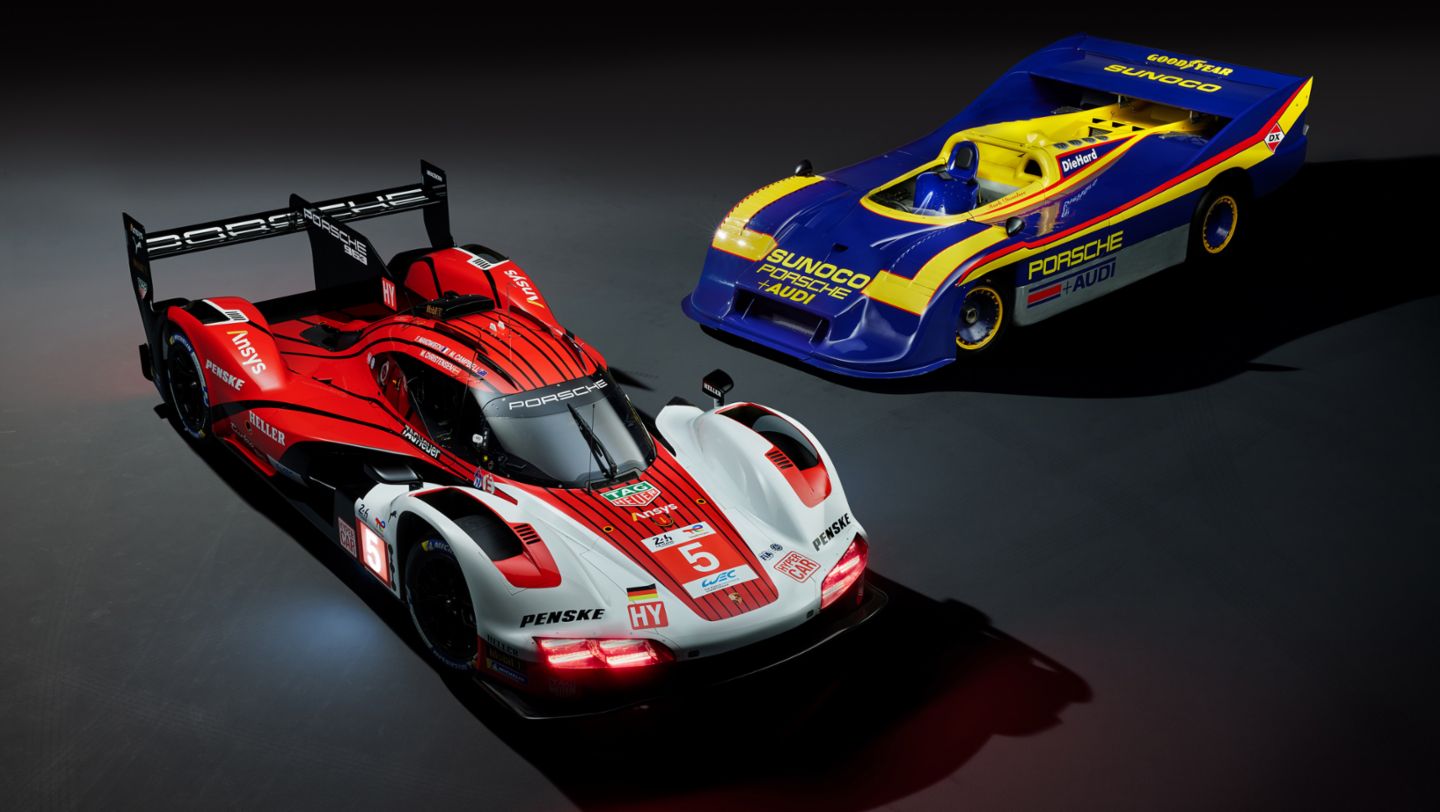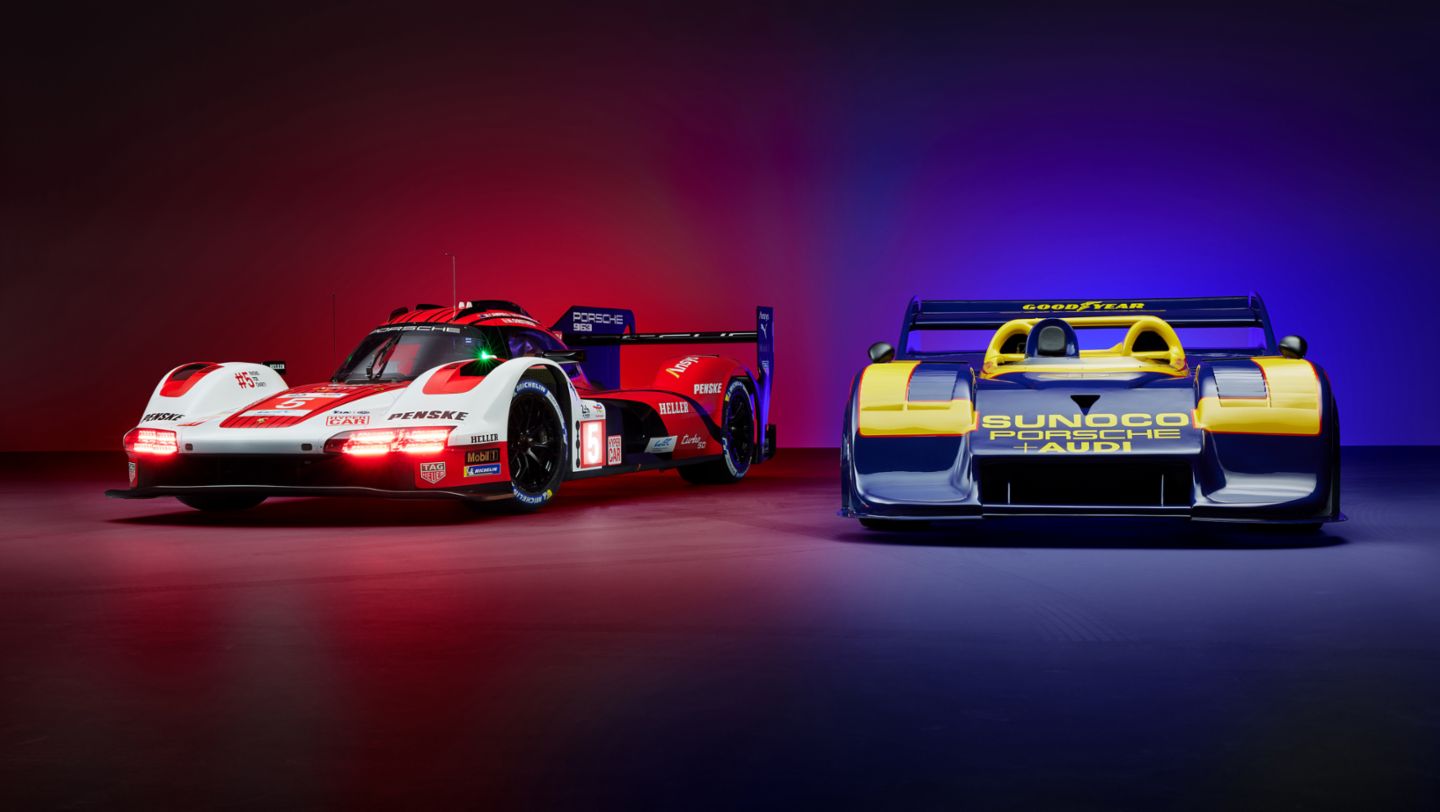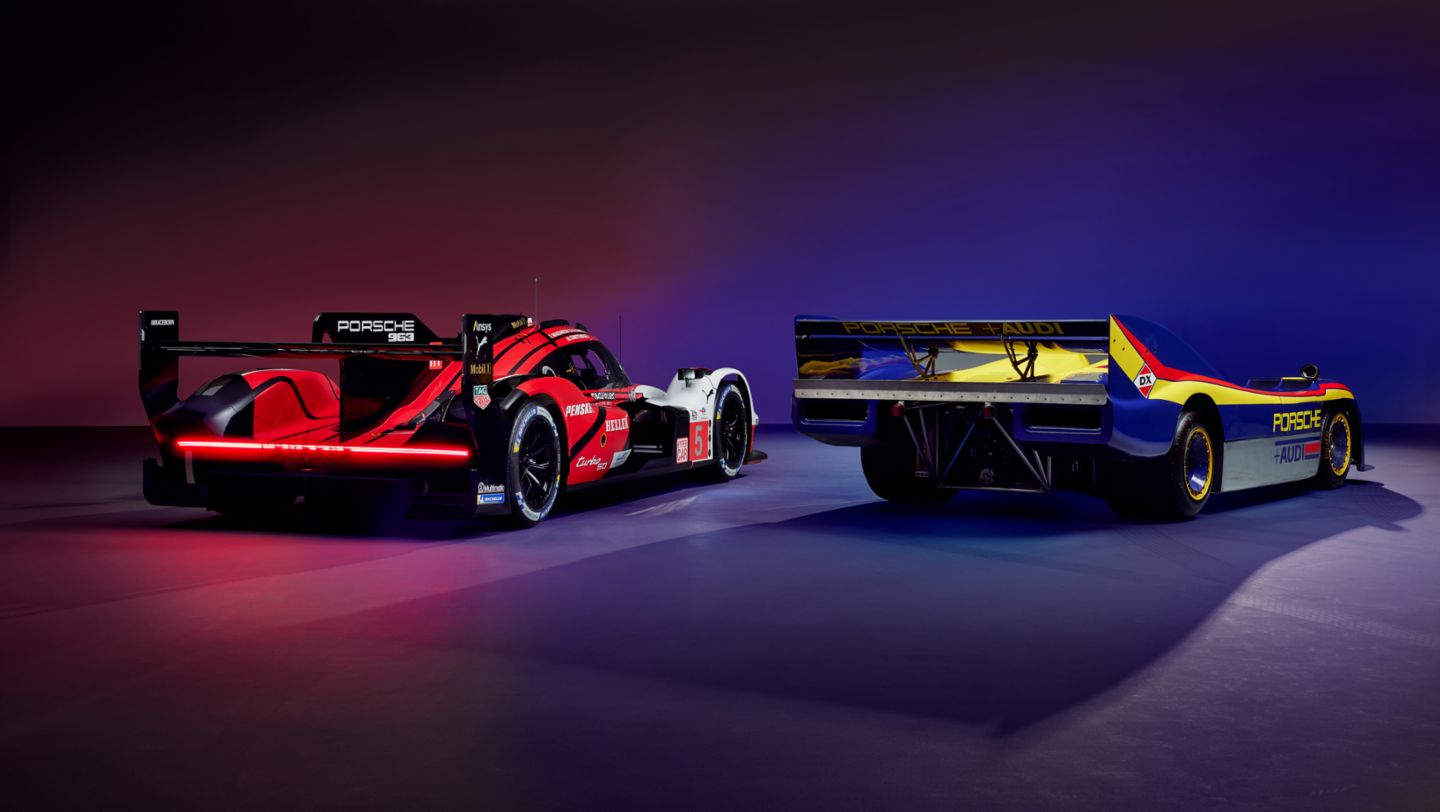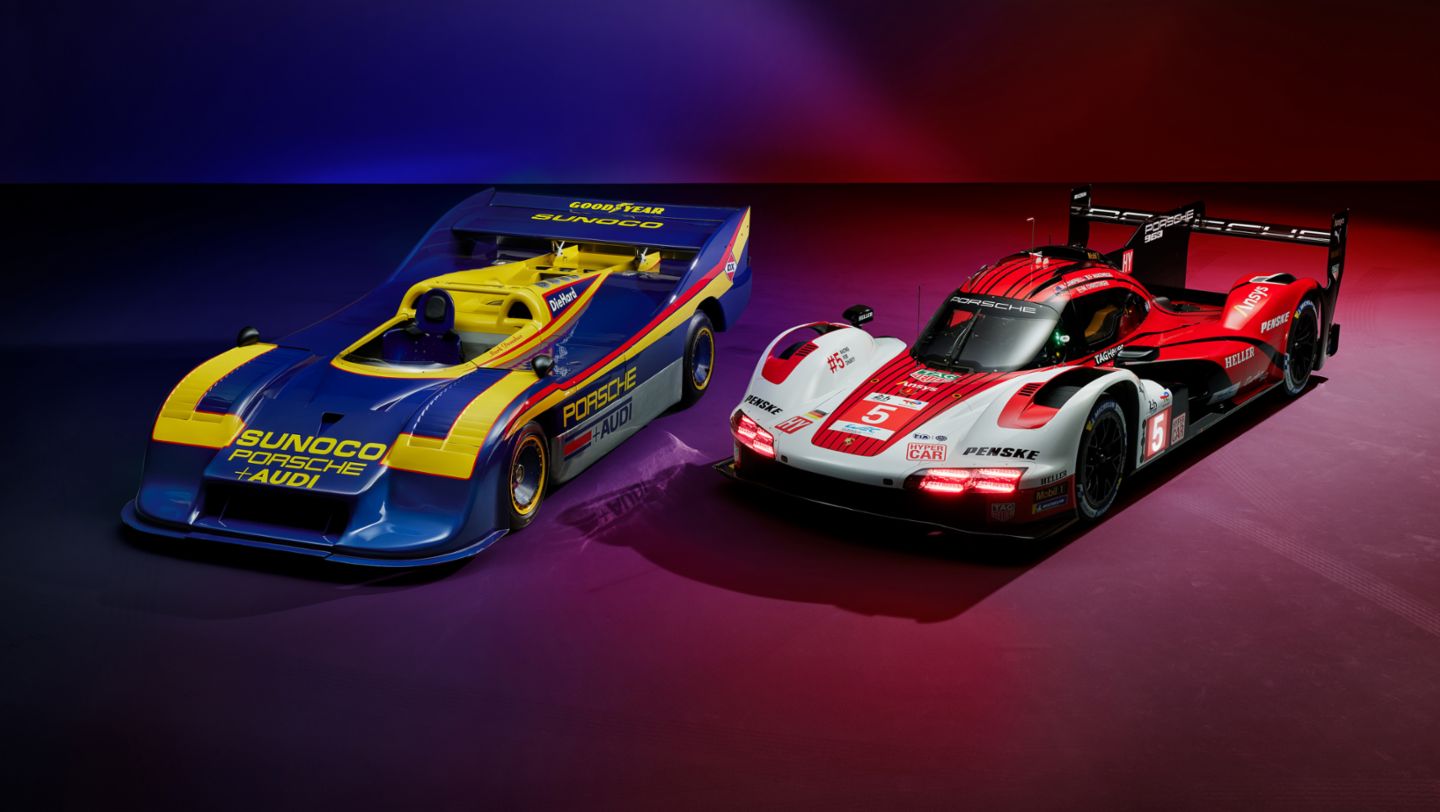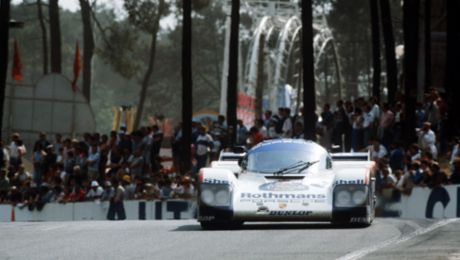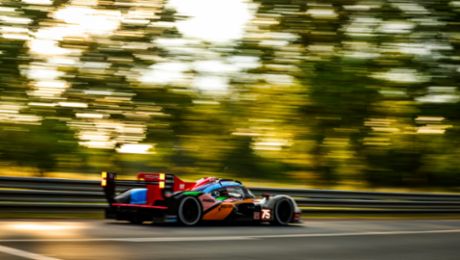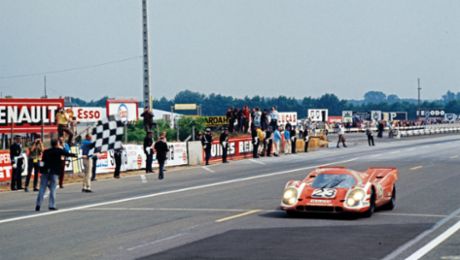Innovation and motor racing go hand-in-hand at Porsche. The development of turbo technology is a prime example. In 1974, exactly 50 years ago, the 911 Turbo, Porsche’s first turbocharged series model, celebrated its world debut. Producing 260 PS, it was brutishly powerful for its time. The roots of its cutting-edge engine lay in racing: Supercharging technology was used for the first time in the Porsche 917/10. Today, the system output of the latest 911 variant reaches 398 kW (541 PS, 911 Carrera GTS: Fuel consumption* combined (WLTP) 11.0 – 10.4 l/100 km, CO₂ emissions* combined (WLTP) 248 – 236 g/km, CO₂ class G , CO₂ class weighted combined G ).
The 911 Carrera GTS is also powered by a turbo engine but combines it for the first time with a T-hybrid system. The engineers once again benefit from the knowledge Porsche has collected in motorsports: from 2015 to 2017, the technologically sophisticated 919 Hybrid won the 24 Hours of Le Mans three times and swept the title pool in the FIA World Endurance Championship WEC. Porsche now targets its 20th overall victory in the world’s most famous endurance race with the 963-hybrid prototype. Know-how transfer from the racetrack to the road.
The beginning of Porsche's turbo technology
It was the summer of 1970. Porsche had won the 24 Hours of Le Mans for the first time with the 917 KH and was looking for its next challenge: victories in the North American CanAm series. However, with its comparatively small, 580 PS 4.5-litre twelve-cylinder engine, the 917 faced tough competition from the big-block American cars. Plans for a 16-cylinder power plant were drawn up. At the same time, the idea of achieving the needed performance boost from an exhaust turbocharger was also evolving.
The problem, however, was that the constant braking and acceleration on the twisty CanAm tracks required a high-revving turbocharger with as little lag as possible. The innovative solution: a boost pressure control system on the exhaust side prevented unwanted excess pressure in partial load or overrun operation by expelling excess exhaust gases via a bypass relief valve and a wastegate. This limited the boost pressure and kept it at a constant level. It also allowed for a smaller turbocharger, lower rotating masses and improved responsiveness.
In late July 1971, an open 917/10 Spyder with a supercharged engine turned its first laps in Weissach: Instead of a large turbocharger, Porsche opted for a smaller turbo on each of the two cylinder banks. This improved the responsiveness enormously and produced 850 PS. The stage was set and the CanAm success was monumental: in 1972, Porsche’s partner team Penske Enterprises won six of the nine race as well as the CanAm Cup and the drivers’ title thanks to George Follmer. In 1973, the 5.4-litre 917/30 Spyder put out a staggering 1,100 PS. Only changes to the regulations could stop Porsche’s winning streak – but they did not halt the march of turbo technology, especially in motorsport.
The turbo engine revolutionises Le Mans
After CanAm, Porsche continued to use turbos in racing versions of the 911 and specially designed prototypes. The first racing car equipped with a turbo engine at Le Mans in 1974 was a 911 Carrera RSR Turbo 2.1, which turned laps during practice with hissing noises. Its 368 kW (500 PS), 2.1-litre flat-six power unit already featured intercooling: the air cooled on its journey from the charger to the combustion chambers is denser and thus more oxygen-rich. At the 24-hour race, it achieved a sensational second place overall. Once again, the transfer of technology to series production quickly followed, with the intercooling migrating into the 911 Turbo from 1977. This boosted the power output of the series model to 300 PS.
The turbocharged 2.1-litre engine yielded the first two outright victories for a turbo racing car at Le Mans: In 1976, the open-body 936/76 Spyder initially produced 382 kW (520 PS) and achieved a top speed of 360 km/h. A year later, the 700-kilogram lightweight – now featuring two chargers and producing 397 kW (540 PS) – clinched victory again. In 1978 and 1979, technical problems interrupted the winning streak but Porsche learned from its defeats and demonstrated formidable ambition and stamina: in 1981, the 936 Spyder, now with 456 kW (620 PS), tackled Le Mans again and bid farewell to the works team with a third victory.
In the meantime, in 1979, Kremer Racing achieved the first overall Le Mans victory with a racing version of the 911 Turbo – the 935. Even then, customer racing formed the basis of Porsche’s racing commitment. The development of the vehicle culminated in 1978 with the 935/78 “Moby Dick”, which was used solely by the works team. Its 3.2-litre biturbo engine was the first to feature water-cooled multi-valve cylinder heads and delivered up to 621 kW (845 PS).

The beginning of a special Le Mans era
Porsche 956 and 962 C racing prototypes won the 24 Hours of Le Mans seven times between 1982 and 1994 – thus writing a unique success story. They heralded a revolution in aerodynamic design and many other innovations that are reflected in Porsche production vehicles today. The ground effect of the specially shaped underbody enabled very high cornering speeds, provided stability on the straights and shortened braking distances – an effect that has long been featured in numerous production models.
The development of fully electronic engine control units such as the Motronic from Bosch also yielded huge progress in efficiency in terms of the consumption limit stipulated in the Group C regulations at the time. Another cutting-edge innovation: the Porsche dual-clutch transmission PDK. The racing department had been experimenting with the system since the autumn of 1984, which enables swift gear shifts with virtually no interruption to power delivery. It worked reliably from 1987 onwards. Today, the sports car manufacturer delivers most of its production cars with PDK instead of a manual gearbox. Under the name DSG, it has also begun its victory march in many divisions of the Volkswagen Group and other car manufacturers.

The 3.0-litre biturbo six-cylinder engine of the 962 C also powered the open TWR Porsche WSC Spyder, which Joest Racing drove to overall victory at Le Mans in 1996 and 1997. At the same time, the works team put its faith in the Porsche 911 GT1, now with its six-cylinder boxer engine mounted at the front of the rear axle. Its 441 kW (600 PS) 3.2-litre biturbo engine represented a technical development that was introduced into series production in 1997 with the 996-generation 911 – fully water-cooled. In 1998, the Porsche 911 GT1-98 clinched a one-two victory at Le Mans.
The racetrack as a unique test laboratory
The 919 Hybrid underlined how consequently Porsche uses motorsport as a development platform for cutting-edge technologies. The Le Mans winner of 2015, 2016 and 2017 is still the most complex racing car the sports car manufacturer has ever built. Its compact, highly efficient V4 engine with the Porsche-developed direct fuel injection represented state-of-the-art technology. The 2.0-litre petrol engine produced around 368 kW (500 PS), with an electric motor driving the front axle at times with around 294 kW (400 PS).
The lithium-ion battery recuperated energy partly via braking and partly through a technology used only by Porsche in the World Endurance Championship: a second turbocharger – with variable turbine geometry – in the exhaust flow powered a generator. Another particularly innovative feature was the 800-volt system that Porsche had developed from scratch for the 919 Hybrid. This was used for the first time in a production model – the Porsche Taycan unveiled in 2019 – and is one of the key technical features of Porsche's first purely electric sports car.

The full potential of the high-tech racing car was underlined in 2018 by the Evo version of the 919 Hybrid. Freed from regulatory constraints, two-time Le Mans winner and Porsche brand ambassador Timo Bernhard turned a lap of the Nürburgring Nordschleife in 5:19.55 minutes. The video of the spectacular record lap has now been viewed over nine million times on YouTube.
Porsche 963: 20th outright win in sight
Since 2023, Porsche has again been represented with a hybrid vehicle in the highest class of the FIA World Endurance Championship WEC and the American IMSA sports car series. Development of the 963 began in 2020. It combines a 4.6-litre V8 engine whose roots go back to the Porsche RS Spyder and the 918 Spyder super sports car with two small turbochargers and a hybrid system. Based on the LMDh regulations, the prototype produces a total output of around 515 kW (700 PS).

The job of the 963 is clear: to score the 20th Le Mans victory for Porsche and showcase the potential of the manufacturer’s sports cars. Fifty years after the world premiere of the 911 Turbo in Paris, this would be the 18th outright win for a Porsche racing car with a turbocharged engine.
